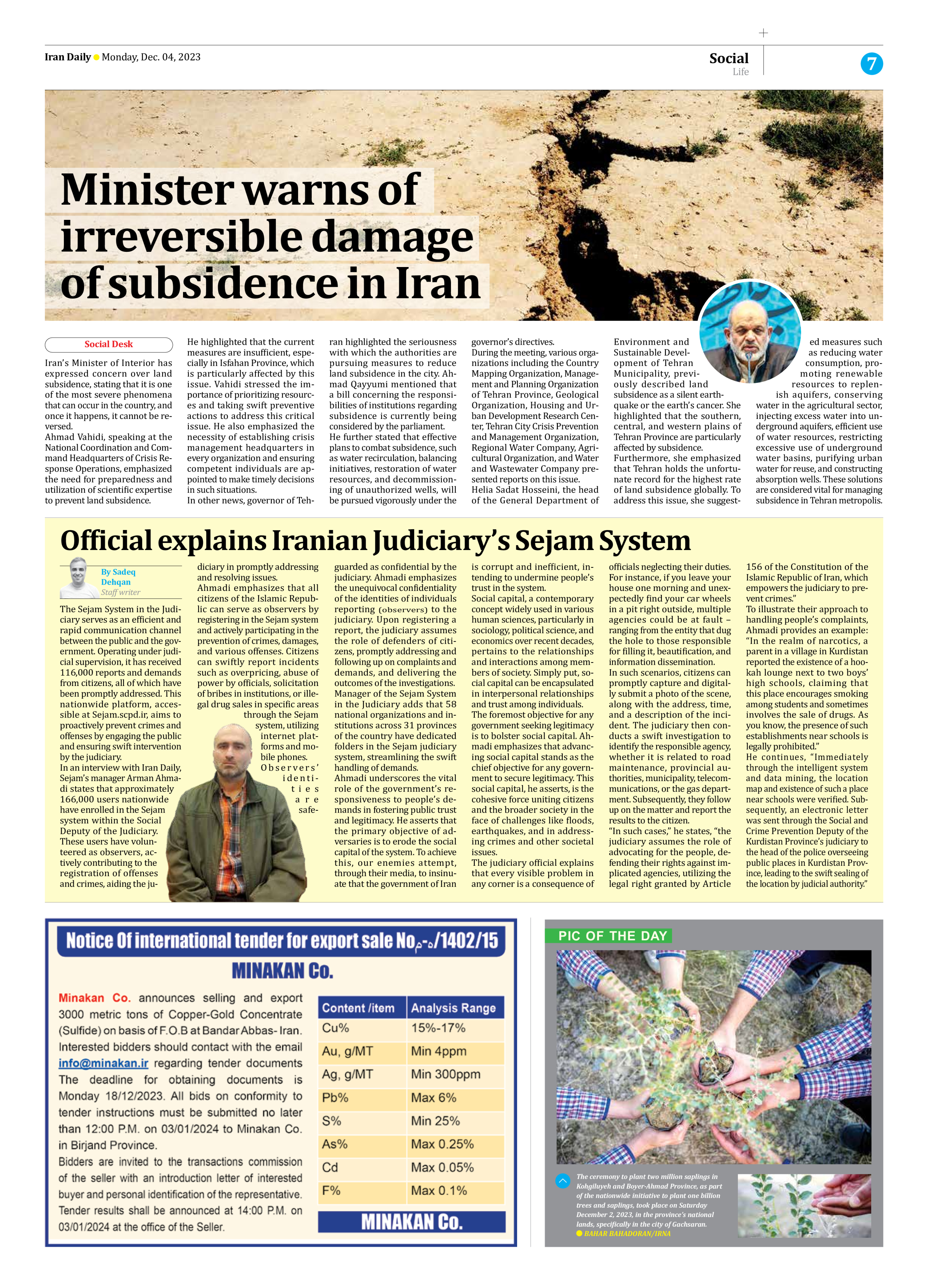
Minister warns of irreversible damage of subsidence in Iran
Social Desk
Iran’s Minister of Interior has expressed concern over land subsidence, stating that it is one of the most severe phenomena that can occur in the country, and once it happens, it cannot be reversed.
Ahmad Vahidi, speaking at the National Coordination and Command Headquarters of Crisis Response Operations, emphasized the need for preparedness and utilization of scientific expertise to prevent land subsidence.
He highlighted that the current measures are insufficient, especially in Isfahan Province, which is particularly affected by this issue. Vahidi stressed the importance of prioritizing resources and taking swift preventive actions to address this critical issue. He also emphasized the necessity of establishing crisis management headquarters in every organization and ensuring competent individuals are appointed to make timely decisions in such situations.
In other news, governor of Tehran highlighted the seriousness with which the authorities are pursuing measures to reduce land subsidence in the city. Ahmad Qayyumi mentioned that a bill concerning the responsibilities of institutions regarding subsidence is currently being considered by the parliament.
He further stated that effective plans to combat subsidence, such as water recirculation, balancing initiatives, restoration of water resources, and decommissioning of unauthorized wells, will be pursued vigorously under the governor’s directives.
During the meeting, various organizations including the Country Mapping Organization, Management and Planning Organization of Tehran Province, Geological Organization, Housing and Urban Development Research Center, Tehran City Crisis Prevention and Management Organization, Regional Water Company, Agricultural Organization, and Water and Wastewater Company presented reports on this issue.
Helia Sadat Hosseini, the head of the General Department of Environment and Sustainable Development of Tehran Municipality, previously described land subsidence as a silent earthquake or the earth’s cancer. She highlighted that the southern, central, and western plains of Tehran Province are particularly affected by subsidence.
Furthermore, she emphasized that Tehran holds the unfortunate record for the highest rate of land subsidence globally. To address this issue, she suggested measures such as reducing water consumption, promoting renewable resources to replenish aquifers, conserving water in the agricultural sector, injecting excess water into underground aquifers, efficient use of water resources, restricting excessive use of underground water basins, purifying urban water for reuse, and constructing absorption wells. These solutions are considered vital for managing subsidence in Tehran metropolis.







